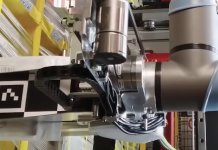Energy transition, decarbonization, and biofuels are all goals that are now talked about on a daily basis considering that the dates of realization seem far away but are now just around the corner: in fact, carbon neutrality is to be achieved by 2050, which changes the perspective to several productive sectors.
Already by 2030, according to the International Energy Agency, it is necessary to sustain an investment of at least $90 billion in research and development. Looking 30 years ahead, the amount becomes dizzying in order to sustain the energy transition: about $24 trillion will have to be redirected from investments in fossil fuels to other technologies.
And what are these technologies? Again, according to the International Agency, they are innovations that are currently still in the testing phase, solutions that are therefore not yet on the market but will alone be responsible for cutting emissions by about 50 percent.
While the use of electricity and biofuels support the transformation in the coming years, we instead see a new technological shift from 2030 onward: investment will be in hydrogen, second-generation biofuels, energy storage systems, and carbon capture devices such as smog-eating concrete facades, particulate capture planters, plant-based infrastructures, air filters on clothing and furniture fabrics, and the list goes on and on, both in the micro and macro domains.
A transformation that needs interstate cooperation but also the initiative of individual businesses.








































